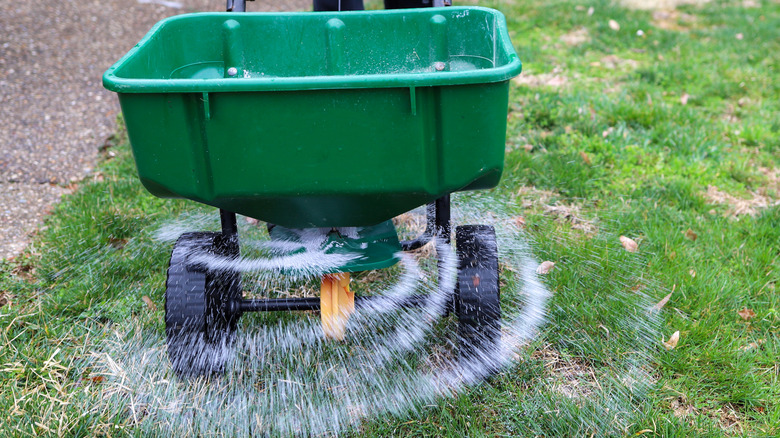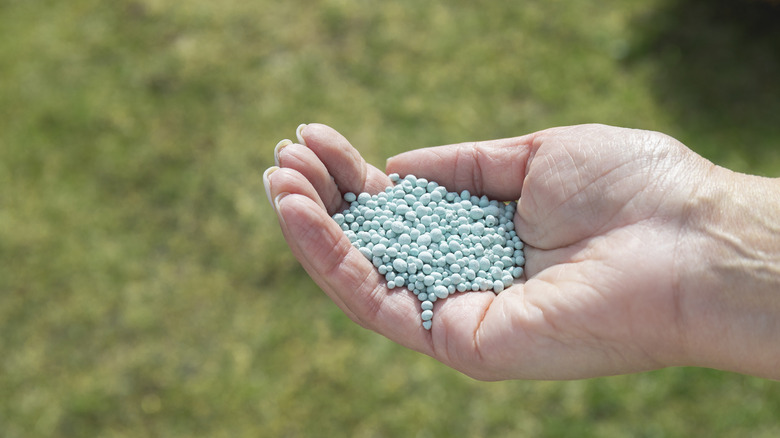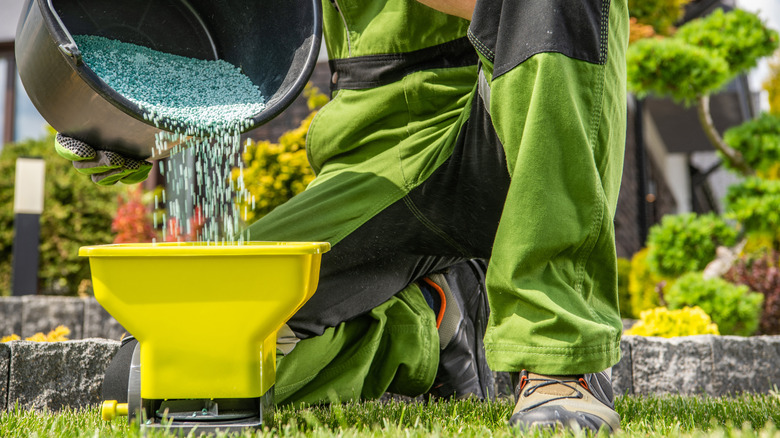Ingredients To Make Sure You Use While Fertilizing Your Lawn
Maintaining a lush, vibrant lawn requires diligent care, including proper fertilization. Unlike their wild brethren, your garden plants and tufts require additional nutrient support as they grow in relatively less fertile soils. The situation becomes exacerbated when garden clippings are removed after mowing, as they lose out on organic matter. So, to enable access to essential nutrients for repairing damage and promoting growth, grasses and landscape plants must be routinely fertilized.
However, following effective fertilization practices involves more than just determining the best time to enrich your soil. The type of fertilizer used based on the plant type and the lawn's condition plays a key role, too. Having said that, on average, a plant can need up to 14 mineral nutrients at any given time, but three main nutrients rule the composition of your fertilizer — nitrogen, phosphorous, and potassium — with nitrogen's requirements ranking the highest. However, the early autumn application may necessitate higher quantities of potassium and phosphorus as it improves root growth — an important condition to experience lush foliage in the upcoming spring season.
Key ingredients you need in a fertilizer
As stated, you'll need to look out for three major nutrients, nitrogen (N), phosphorus (P), and potassium (K), in your lawn fertilizer, in addition to some trace elements such as iron, manganese, and zinc. As nitrogen is responsible for the grass' green color, density, and vertical growth, it's applied the most to your turf, with its visual impact lasting between four to eight weeks. Like nitrogen, potassium is used in higher quantities because it boosts plant metabolism and regulates water transport. Similarly, phosphorus is essential, given its root and flower growth promotion properties.
However, the quantities of these elements — stated as an NPK ratio on the fertilizer bag — will differ according to your landscape's design. Denser grasses need greater nitrogen and potassium percentages, ideally in a 3:1:2 or 4:1:2 NPK ratio, to fuel verdant growth. But flowering plants prefer a slow-release 3:5:4 fertilizer, which encourages more blooms and is easily absorbed by their roots. In contrast, food plants fare better with balanced 10:10:10 fertilizers. Dosages must be reduced further to accommodate the growth in shaded areas.
Applying the right fertilizer quantity
While a lawn may require multiple fertilizer applications throughout the year, feeding it during the fall season is the most important because it bolsters root growth before winter dormancy sets in. Fall lawn care necessitates that you use a broadcast spreader instead of a drop spreader to evenly spread out fertilizer on your lawn to avoid overfeeding and prevent grass striping. Make sure to consult the application rates stated on the fertilizer's label. To play it safe, you can start by adding half of the advised quantity to your spreader's hopper to eliminate the chance of overfeeding, which can result in dead grass, then reapply with a second dose if needed.
To apply the fertilizer the right way, start with the perimeter and then move to the lawn's center, applying half the quantity in a perpendicular direction, say north-south. Then, repeat the process with the remaining quantity in the other direction (west-east) to ensure even coverage without going overboard on the feed's quantity.


